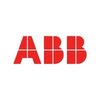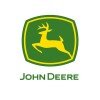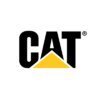Filter interviews by
Expertise Contracting Company Interview Questions and Answers for Freshers
30 Interview questions
Body joint gasket thickness refers to the measurement of the gasket material used to seal the joint between two components.
Body joint gasket thickness is crucial for ensuring a proper seal and preventing leaks.
The thickness of the gasket material can vary depending on the specific application and requirements.
Common thicknesses for body joint gaskets range from 0.5mm to 5mm.
Proper installation and torque of the fa...
A gasket is a mechanical seal that fills the space between two mating surfaces to prevent leakage.
Gaskets are commonly used in engines to prevent fluids from leaking out.
They can be made from materials such as rubber, silicone, metal, or paper.
Gaskets are often used in plumbing systems to create a watertight seal.
They come in various shapes and sizes to fit different applications.
ASME/ANSI Code Flanges are standardized flanges used in piping systems to ensure compatibility and safety.
ASME/ANSI Code Flanges are designed to specific dimensions and pressure ratings to ensure compatibility with pipes and valves.
They are commonly used in industries such as oil and gas, chemical, and power generation.
ASME B16.5 is a widely used standard for ASME/ANSI Code Flanges.
These flanges are marked with a ...
ASME/ANSI Code of Gasket refers to the standards set by the American Society of Mechanical Engineers and the American National Standards Institute for gaskets used in various industrial applications.
ASME/ANSI Code of Gasket provides guidelines for the design, materials, dimensions, and performance of gaskets.
These codes ensure that gaskets meet certain quality and safety standards for use in pressure vessels, pipi...
Flanges are used in valve shops to connect valves to pipes securely and efficiently.
Flanges provide a leak-tight connection between valves and pipes
They allow for easy assembly and disassembly of valves for maintenance or replacement
Flanges come in various types such as weld neck, slip-on, and threaded flanges
They help in aligning and supporting the valve properly in the piping system
Conventional valves have a linear motion while bellows valves have a flexible bellows element for sealing.
Conventional valves have a linear motion to open and close, while bellows valves use a flexible bellows element for sealing.
Bellows valves are typically used in applications where leakage prevention is critical, such as in high-pressure or vacuum systems.
Conventional valves are simpler in design and operation ...
CDTP is the Closing Differential Test Pressure, while Set Pressure is the pressure at which a safety valve opens.
CDTP is the pressure difference between the set pressure and the closing pressure of a safety valve.
Set Pressure is the pressure at which a safety valve opens to release excess pressure.
CDTP ensures the safety valve closes properly after relieving pressure, while Set Pressure determines when the valve o...
Control valves are essential components in regulating fluid flow in a system.
Control valves regulate flow rate, pressure, temperature, and liquid level in a system.
They consist of a valve body, actuator, and positioner.
Common types include globe valves, butterfly valves, and ball valves.
Control valves are used in industries such as oil and gas, chemical, and water treatment.
A pressure gauge Testing Standard is a set of guidelines and criteria used to ensure the accuracy and reliability of pressure gauges.
Pressure gauge Testing Standards specify the methods and procedures for testing pressure gauges.
They outline the acceptable levels of accuracy and reliability that pressure gauges must meet.
Pressure gauge Testing Standards may include calibration procedures, testing equipment require...
A mechanical valve testing standard is a set of guidelines and procedures used to ensure the quality and performance of mechanical valves used in various industries.
Mechanical valve testing standards outline the requirements for design, materials, manufacturing, and performance testing of mechanical valves.
These standards help ensure that mechanical valves meet safety, reliability, and performance criteria.
Example...
Expertise Contracting Company Interview Experiences for Freshers
3 interviews found
I applied via Company Website and was interviewed before Jan 2023. There was 1 interview round.
(16 Questions)
- Q1. Different Between CDTP and Set Pressure.
- Ans.
CDTP is the Closing Differential Test Pressure, while Set Pressure is the pressure at which a safety valve opens.
CDTP is the pressure difference between the set pressure and the closing pressure of a safety valve.
Set Pressure is the pressure at which a safety valve opens to release excess pressure.
CDTP ensures the safety valve closes properly after relieving pressure, while Set Pressure determines when the valve opens.
...
- Q2. Different Between conventional and Bellow Valve
- Ans.
Conventional valves have a linear motion while bellows valves have a flexible bellows element for sealing.
Conventional valves have a linear motion to open and close, while bellows valves use a flexible bellows element for sealing.
Bellows valves are typically used in applications where leakage prevention is critical, such as in high-pressure or vacuum systems.
Conventional valves are simpler in design and operation compa...
- Q3. What is gasket .
- Ans.
A gasket is a mechanical seal that fills the space between two mating surfaces to prevent leakage.
Gaskets are commonly used in engines to prevent fluids from leaking out.
They can be made from materials such as rubber, silicone, metal, or paper.
Gaskets are often used in plumbing systems to create a watertight seal.
They come in various shapes and sizes to fit different applications.
- Q4. Why flang use in Valve Shop.
- Ans.
Flanges are used in valve shops to connect valves to pipes securely and efficiently.
Flanges provide a leak-tight connection between valves and pipes
They allow for easy assembly and disassembly of valves for maintenance or replacement
Flanges come in various types such as weld neck, slip-on, and threaded flanges
They help in aligning and supporting the valve properly in the piping system
- Q5. What is ASME/ASNI Code of Gasket.
- Ans.
ASME/ANSI Code of Gasket refers to the standards set by the American Society of Mechanical Engineers and the American National Standards Institute for gaskets used in various industrial applications.
ASME/ANSI Code of Gasket provides guidelines for the design, materials, dimensions, and performance of gaskets.
These codes ensure that gaskets meet certain quality and safety standards for use in pressure vessels, piping sy...
- Q6. What is ASME/ANSI Code Flang.
- Ans.
ASME/ANSI Code Flanges are standardized flanges used in piping systems to ensure compatibility and safety.
ASME/ANSI Code Flanges are designed to specific dimensions and pressure ratings to ensure compatibility with pipes and valves.
They are commonly used in industries such as oil and gas, chemical, and power generation.
ASME B16.5 is a widely used standard for ASME/ANSI Code Flanges.
These flanges are marked with a press...
- Q7. How much standard Back pressure in Bellow Valve .
- Ans.
Standard back pressure in bellow valve is typically around 10-15 psi.
Standard back pressure in bellow valve is usually around 10-15 psi.
Back pressure helps to maintain a seal in the valve and prevent leakage.
Excessive back pressure can cause the valve to malfunction or fail.
Back pressure can vary depending on the specific application and type of bellow valve.
It is important to follow manufacturer guidelines for back pr...
- Q8. What is mean parts of Control Valves
- Ans.
Control valves are essential components in regulating fluid flow in a system.
Control valves regulate flow rate, pressure, temperature, and liquid level in a system.
They consist of a valve body, actuator, and positioner.
Common types include globe valves, butterfly valves, and ball valves.
Control valves are used in industries such as oil and gas, chemical, and water treatment.
- Q9. What is a Mechanical valve Testing Standard.
- Ans.
A mechanical valve testing standard is a set of guidelines and procedures used to ensure the quality and performance of mechanical valves used in various industries.
Mechanical valve testing standards outline the requirements for design, materials, manufacturing, and performance testing of mechanical valves.
These standards help ensure that mechanical valves meet safety, reliability, and performance criteria.
Examples of ...
- Q10. Types of gate valve
- Ans.
Gate valves are used to control the flow of fluid in a pipeline by opening and closing a gate.
Gate valves are primarily used for on/off control of flow.
They are not suitable for regulating flow due to their design.
Common types include wedge gate valves, parallel gate valves, and knife gate valves.
Gate valves can be classified based on the type of gate, such as solid wedge, flexible wedge, split wedge, and parallel slid...
- Q11. Types of globe valve
- Ans.
Globe valves are used to regulate flow in a pipeline by raising or lowering a disc to control the flow of fluid.
Globe valves have a spherical body with an internal baffle and a movable plug (disc) to control flow.
They are commonly used in applications where throttling or frequent operation is required.
Types of globe valves include angle globe valves, straight globe valves, and Y-pattern globe valves.
Materials used for ...
- Q12. Types of ball valve
- Ans.
Ball valves are a type of quarter-turn valve that uses a hollow, perforated, and pivoting ball to control flow through it.
Ball valves are categorized based on the number of ports they have: 2-way, 3-way, or 4-way.
They can also be classified based on the type of ball used: floating ball valve, trunnion ball valve, or V-port ball valve.
Materials used for ball valves include stainless steel, brass, bronze, PVC, and carbon...
- Q13. What is a pressure gauge Testing Standard.
- Ans.
A pressure gauge Testing Standard is a set of guidelines and criteria used to ensure the accuracy and reliability of pressure gauges.
Pressure gauge Testing Standards specify the methods and procedures for testing pressure gauges.
They outline the acceptable levels of accuracy and reliability that pressure gauges must meet.
Pressure gauge Testing Standards may include calibration procedures, testing equipment requirements...
- Q14. What is a Body Joint gasket Thikness.
- Ans.
Body joint gasket thickness refers to the measurement of the gasket material used to seal the joint between two components.
Body joint gasket thickness is crucial for ensuring a proper seal and preventing leaks.
The thickness of the gasket material can vary depending on the specific application and requirements.
Common thicknesses for body joint gaskets range from 0.5mm to 5mm.
Proper installation and torque of the fastene...
- Q15. Types of flang Face
- Ans.
Types of flange faces include raised face, flat face, ring-type joint, and tongue and groove.
Raised face: a small portion around the bore is raised above the bolting circle for gasket seating
Flat face: the flange face is flat and does not have any protrusions
Ring-type joint: a metal ring is used to create a seal between two flanges
Tongue and groove: one flange has a raised ring while the other has a matching depression...
- Q16. Types of Gasket
- Ans.
Types of gaskets include spiral wound, ring joint, sheet, and solid metal.
Spiral wound gaskets are made of a V-shaped metal strip and a filler material.
Ring joint gaskets are used in high pressure and high temperature applications.
Sheet gaskets are cut from sheets of materials like rubber, cork, or paper.
Solid metal gaskets are made of a single piece of metal with no filler material.
Interview Preparation Tips
Interview Questionnaire
15 Questions
- Q1. What is confined space?
- Ans.
Confined space refers to an enclosed or partially enclosed area with limited access and ventilation.
Confined spaces are typically small and have restricted entry and exit points.
They may have limited airflow and may contain hazardous substances or conditions.
Examples of confined spaces include storage tanks, tunnels, sewers, and crawl spaces.
Workers entering confined spaces must follow strict safety protocols and use a...
- Q2. How many types of work permit?
- Ans.
There are several types of work permits that vary depending on the nature of the work being performed.
Different types of work permits include hot work permits, confined space permits, electrical work permits, and excavation permits.
Each type of work permit is specific to the hazards and risks associated with the particular work being carried out.
For example, a hot work permit is required for any work involving open fla...
- Q3. What is safety?
- Ans.
Safety is the state of being protected from harm, danger, or risk.
Safety refers to the measures taken to prevent accidents, injuries, or illnesses.
It involves identifying and assessing potential hazards and implementing controls to minimize or eliminate risks.
Safety includes promoting awareness, training, and adherence to safety protocols and procedures.
Examples of safety measures include wearing personal protective eq...
- Q4. What is hazard?
- Ans.
A hazard is a potential source of harm or danger that can cause injury, illness, or damage to property.
A hazard is any condition, substance, or activity that has the potential to cause harm.
Hazards can be physical, chemical, biological, ergonomic, or psychosocial in nature.
Examples of hazards include slippery floors, toxic chemicals, infectious diseases, repetitive motion injuries, and workplace stress.
Identifying and ...
- Q5. Give me some example of confined space?
- Ans. Vessels tanks boiler and tube area silas trench excavation depart than 4 feet
- Q6. Hazardous job in confined space
- Ans.
Working in a confined space poses significant hazards that require proper safety measures.
Identify and assess potential hazards in the confined space
Implement proper ventilation and air quality monitoring
Ensure proper training and equipment for workers
Establish effective communication and emergency procedures
Regularly inspect and maintain the confined space
Examples: working in underground tunnels, storage tanks, or sew...
- Q7. What is Lotto?
- Ans.
Lotto is a form of gambling where players select a set of numbers in the hope of matching them with the numbers drawn in a lottery.
Lotto is a popular game of chance played worldwide.
Players choose a set of numbers and purchase a ticket.
A random drawing of numbers takes place, and if the player's numbers match, they win a prize.
Lotto can have different variations, such as Powerball or Mega Millions.
It is important to pl...
- Q8. What isToolbox talk?
- Ans.
Toolbox talk is a short safety meeting held to discuss specific safety topics and address any concerns or issues related to the workplace.
Toolbox talk is a common practice in industries to promote safety awareness and prevent accidents.
It is usually a brief meeting conducted at the worksite before starting the day's work.
The purpose of a toolbox talk is to educate employees about potential hazards, safe work practices,...
- Q9. What is accident?
- Ans.
An accident is an unplanned event that results in injury, damage, or loss.
Accidents are unexpected and unintentional incidents.
They can occur in various settings such as workplaces, roads, or homes.
Accidents can cause physical harm, property damage, or financial loss.
Examples include car crashes, slips and falls, chemical spills, and electrical shocks.
- Q10. What is risk assessment?
- Ans.
Risk assessment is the process of identifying, evaluating, and prioritizing potential risks to determine appropriate control measures.
Risk assessment involves identifying hazards and their potential consequences.
It evaluates the likelihood and severity of each risk.
Control measures are then implemented to reduce or eliminate the identified risks.
Examples include conducting a fire risk assessment in a building, assessin...
- Q11. What is risk assessment
- Ans.
Risk assessment is the process of identifying, evaluating, and prioritizing potential risks to determine appropriate control measures.
Risk assessment involves identifying hazards and their potential consequences.
It evaluates the likelihood and severity of each risk.
The process helps in determining the level of risk and prioritizing actions to mitigate or eliminate the risks.
Examples of risk assessment include assessing...
- Q12. What is work permit
- Ans.
A work permit is a document that authorizes a person to perform a specific job or task in a controlled or hazardous environment.
A work permit is typically issued by a safety officer or supervisor.
It outlines the necessary precautions and safety measures to be taken before, during, and after the job.
Work permits are used to ensure that all necessary safety procedures are followed and that the work is carried out safely.
...
- Q13. What is Jsa and it is used
- Ans.
JSA stands for Job Safety Analysis. It is a systematic process used to identify and mitigate potential hazards in a specific job or task.
JSA is used to break down a job or task into individual steps and identify potential hazards associated with each step.
It involves observing the job being performed, identifying potential hazards, and determining the appropriate control measures to prevent accidents or injuries.
JSA he...
- Q14. What are the hazard in a confined space
- Ans.
Hazardous conditions in confined spaces pose risks to workers' health and safety.
Lack of oxygen or presence of toxic gases
Fire and explosion hazards
Engulfment or entrapment
Physical hazards like falling objects or limited mobility
Temperature extremes or poor ventilation
Chemical exposure or hazardous substances
Electrical hazards
Structural collapse or unstable conditions
- Q15. What is personal protective equipment
- Ans.
Personal protective equipment (PPE) refers to protective clothing, helmets, goggles, or other garments or equipment designed to protect the wearer's body from injury or infection.
PPE includes items such as gloves, masks, safety glasses, helmets, and protective clothing.
It is used to minimize exposure to hazards that can cause injury or illness.
PPE should be selected based on the specific hazards present in the workplac...
Interview Preparation Tips
I appeared for an interview in Dec 2021.
(1 Question)
- Q1. HR Recruitment and Shortlisting
Interview Preparation Tips
Top trending discussions






Interview questions from similar companies

I applied via Company Website and was interviewed in Apr 2020. There were 4 interview rounds.
Interview Questionnaire
1 Question
- Q1. Asking about your previous organization work if you are experienced and also ask basic conceptual question regarding your profile in previous organization
Interview Preparation Tips

(1 Question)
- Q1. Budgeting , forecasting, variance analysis and inventory management
(1 Question)
- Q1. Mostly about personal
Interview Preparation Tips

I appeared for an interview in Jan 2022.

(2 Questions)
- Q1. Interview virtually in teams Introduce yourself Family background Accounts questions Prepaid Prepaid expense IRR Accrued meaning Items from balance sheet Warrenty (follow up with some questions related...
- Q2. Prepare well 1st question is always basic and follow-up with a hard question related to the basic question.
Interview Preparation Tips
Get referred by someone you ll get call from HR within few days.

I applied via Naukri.com and was interviewed in Sep 2021. There were 3 interview rounds.
Interview Questionnaire
2 Questions
- Q1. What is stake management
- Ans.
Stake management refers to the process of identifying and managing stakeholders in a project or organization.
Stakeholders are individuals or groups who have an interest or concern in the project or organization.
Stake management involves identifying stakeholders, assessing their needs and expectations, and developing strategies to engage and communicate with them.
Effective stake management can help ensure project succes...
- Q2. What are the key points for transition
- Ans.
Transition requires careful planning and execution to ensure success.
Identify the goals and objectives of the transition
Develop a detailed plan with timelines and milestones
Communicate the plan to all stakeholders
Allocate resources and assign responsibilities
Monitor progress and make adjustments as necessary
Interview Preparation Tips

I applied via LinkedIn and was interviewed before Aug 2022. There were 3 interview rounds.

Balance sheet cash studying with merger
(1 Question)
- Q1. Merger Cost control Standard costing Merginal costing Budgets and forecasting
Interview Preparation Tips

Aptitude test is very hard
(5 Questions)
- Q1. Question related to your core subjects
- Q2. Question 1 related to coding
- Q3. Ques 2 related to java
- Q4. Question 3 raleyd to python
- Q5. No question asked
Interview Preparation Tips

I applied via Recruitment Consulltant and was interviewed in Feb 2022. There was 1 interview round.
(2 Questions)
- Q1. What is Procure to pay
- Ans.
Procure to pay is the process of acquiring goods and services from a vendor and paying for them.
Procurement process starts with identifying the need for goods or services
Vendor selection and negotiation of terms and conditions
Purchase order creation and approval
Goods or services receipt and inspection
Invoice verification and payment processing
Examples include ordering office supplies, hiring a contractor for a project,...
- Q2. Explain balance sheet
- Ans.
Balance sheet is a financial statement that shows a company's assets, liabilities, and equity at a specific point in time.
It is divided into two sections: assets and liabilities + equity
Assets are what the company owns, while liabilities + equity are what the company owes
The equation for a balance sheet is Assets = Liabilities + Equity
Examples of assets include cash, inventory, and property
Examples of liabilities inclu...
Interview Preparation Tips
- Accounting
- Accounts Payable
Expertise Contracting Company Interview FAQs
Tell us how to improve this page.
Expertise Contracting Company Interviews By Designations
- Expertise Contracting Company Financial Analyst Interview Questions
- Expertise Contracting Company Planning Engineer Interview Questions
- Expertise Contracting Company Senior Engineer Mechanical Interview Questions
- Expertise Contracting Company Workshop Supervisor Interview Questions
- Expertise Contracting Company Senior Project Leader Interview Questions
- Expertise Contracting Company Safety Officer Interview Questions
- Expertise Contracting Company Project Engineer Mechanical Interview Questions
- Expertise Contracting Company QA QC Engineer Interview Questions
- Show more
Interview Questions for Popular Designations
- Team Lead Interview Questions
- Software Engineer Interview Questions
- Senior Associate Interview Questions
- Senior Engineer Interview Questions
- Consultant Interview Questions
- Associate Software Engineer Interview Questions
- Graduate Engineer Trainee (Get) Interview Questions
- Java Developer Interview Questions
- Show more
Overall Interview Experience Rating
based on 1 interview experience
Difficulty level
Duration
Interview Questions from Similar Companies
Expertise Contracting Company Reviews and Ratings
based on 223 reviews
Rating in categories
|
Safety Officer
34
salaries
| ₹2.8 L/yr - ₹10 L/yr |
|
Planning Engineer
27
salaries
| ₹8.1 L/yr - ₹14.4 L/yr |
|
Mechanical Supervisor
24
salaries
| ₹6 L/yr - ₹15 L/yr |
|
Mechanical Engineer
22
salaries
| ₹4 L/yr - ₹14 L/yr |
|
Project Engineer
14
salaries
| ₹6 L/yr - ₹15 L/yr |

John Deere

Thermax Limited

Cummins

ABB
- Home >
- Interviews >
- Expertise Contracting Company Interview Questions >
- Expertise Contracting Company Interview Questions for Fresher













